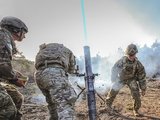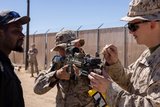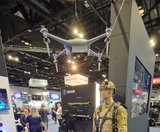US continues progress on JADC2 communications capabilities
The USAF researched and designed several potential solutions for the Tactical Operations Center – Light over the past three years. (Photo: US DoD)
The USAF announced on 5 January that its 505th Command and Control Wing (CCW) supported the Air Force Operational Test and Evaluation Center’s efforts to advance the US DoD’s Joint All Domain Command and Control (JADC2) concept during exercise Project Convergence 22 (PC22).
Project Convergence is an Army Futures Command-led combined joint force (CJF), an experiment designed to develop offensive and defensive capabilities to defeat peer adversaries in large-scale combat operations.
The latest exercise took place between 3 October and 9 November.
PC22 was conducted at several locations across the western US, including US Marine Corps Base Camp Pendleton, March Air Reserve Base and Fort Irwin, California.
During the exercise, the CJF could integrate JADC2-enabling technologies designed to deliver information advantage to soldiers and improve their ability to process information and react to threats across all domains.
The members of the 505th CCW’s 605 Test and Evaluation Squadron (TES) focused on assessing two Tactical Operations Center – Light (TOC-L) prototypes. The TOC-L system is intended to be a highly mobile battle management node, enabling operations anywhere on the battlefield.
‘Speed, range, and convergence will give us the advantage we need as the characters of war change,’ said the US Army Chief of Staff Gen James McConville at the PC22 demonstration day for Scenario B on 9 November
‘Before we talked about interoperability and how will we interoperate but now we want to be integrated from force to force at the speed of relevance at the time. That’s what will give us the capabilities that we need.’

During the exercise, personnel integrated JADC2-enabling technologies designed to deliver information advantage to soldiers and improve their ability to process information and react to threats. (Photo: US DoD)
The USAF says the small footprint, crew size, and combination of both modern and emerging capabilities make the TOC-L concept unique from other air force and joint C2 systems.
‘Current ground-based C2 systems are too big and require a lot of time and logistics to move,’ said US Air Force Maj Carl Plonk, 605th TES operational test air battle manager.
‘We are modernising our tactical C2 capability; a small and mobile system will inherently be more survivable in combat, allowing for informed decision-making at the right place and time on the battlefield.’
The USAF researched and designed several potential solutions for the TOC-L over the past three years.
Some prototypes support distributed data storage and a range of datalink and communications capabilities that allow for more accessible connections and integration with ‘sister services and multi-national partners, the USAF said.
More from Training
-
![Cubic tailors mortar simulator for the US Army]()
Cubic tailors mortar simulator for the US Army
The company’s mortar trainer received improvements based on soldier’s feedback.
-
![Saab expands footprint in the US]()
Saab expands footprint in the US
The company will operate in two new locations in the coming years to better support US services.
-
![How terrain management capabilities can improve military training]()
How terrain management capabilities can improve military training
This type of tool provides more realistic training easing the incorporation of new scenarios that accurately represent the threats of the battlefield.
-
![I/ITSEC 2024: Australian Army approaches second phase of countermining training]()
I/ITSEC 2024: Australian Army approaches second phase of countermining training
The Engineering Corps has been conducting individual instruction using FLAIM Systems’ Sweeper and should start collective deployments in 2025.
-
![I/ITSEC 2024: Zeiss introduces Velvet 4K SIM projector for night flight simulation]()
I/ITSEC 2024: Zeiss introduces Velvet 4K SIM projector for night flight simulation
The next-generation platform is motion-compatible and can be used in OTW and NVG applications.
-
![I/ITSEC 2024: Saab introduces UAV live training capability]()
I/ITSEC 2024: Saab introduces UAV live training capability
The system can be used to prepare soldiers for both drone offensive operations and CUAS missions.



























